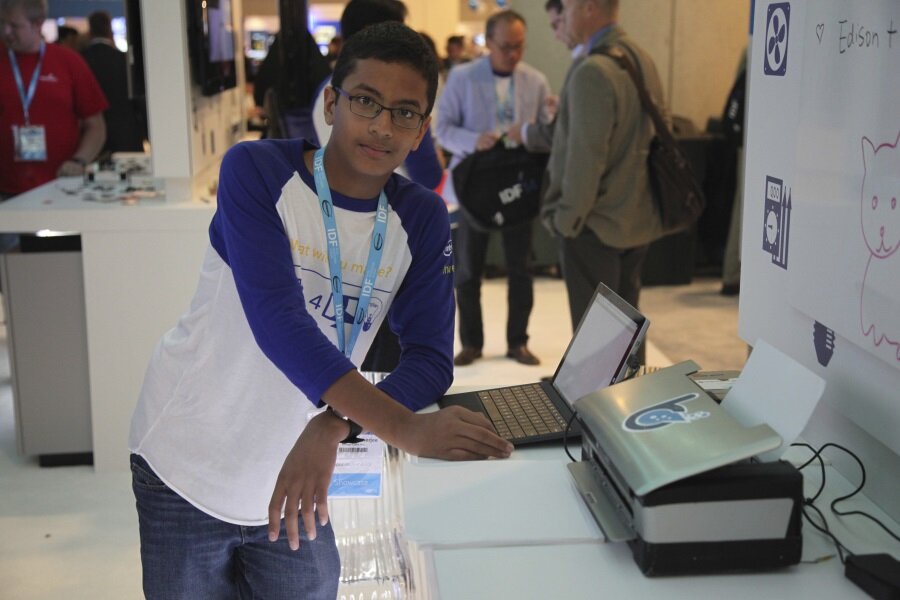Intel pours $62 million into fresh ideas, including low-cost Braille printer
Loading...
Intel’s venture arm announced Tuesday that it will invest $62 million in 16 different tech start-ups, including Braigo Labs, a company working to build an inexpensive Braille printer to assist blind customers. Intel says it plans to invest $355 million total this year in start-ups in order to help new technologies -- especially those that rely on Intel chips -- get off the ground.
Braigo Labs began as a Lego project (in fact, the name is a portmanteau of “Braille” and “Lego”). Shubham Banerjee, a then 12-year-old student from Santa Clara, Calif., built a compact Braille printer with a Lego Mindstorms EV3 set at a cost of about $350, compared with $2000 for commercially-available printers. The Braigo v1.0, as he called it, took about 5 seconds to print each letter. Mr. Banerjee made the design available for download, and has since built a prototype of a new printer that is faster and less expensive than the original. He hopes to bring the new printer to market using the money that Intel and other investors have given to his company.
Intel’s investment covers a wide range of products, from smart devices and chips to wearables and “Internet of things”-connected devices. Other start-ups that will receive a piece of the $62-million pie include Avegant, a wearable computing company best known for the Glyph, a “mobile personal theater” that raised more than $1 million on Kickstarter back in January; and NetSpeed Systems, a California company that’s focused on system-on-a-chip (SoC) architecture. SoCs are used in lots of consumer and enterprise electronics, but creating the designs can be slow. NetSpeed claims that its platform enables people to quickly make designs that are smaller and more power-efficient.
Intel is also making a separate investment in Ossia, an antenna company based in Washington that can beam wireless power to several devices from 30 feet away, even without a line of sight. Ossia is one of several companies working to make wireless charging available to consumers.
Intel has been investing in start-ups since 1991 -- last year it poured $333 million into a variety of projects, and all told the company has backed nearly 500 projects. Intel says it wants to help new tech companies gain momentum, and since it’s safe to say that many of these companies will go on to boost sales of Intel processors, it’s probably a win for Intel as well.








